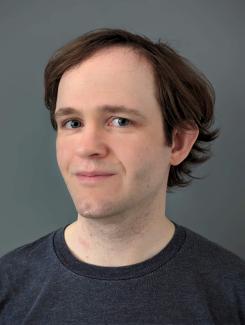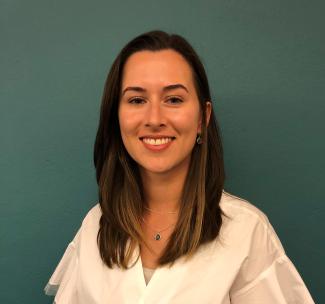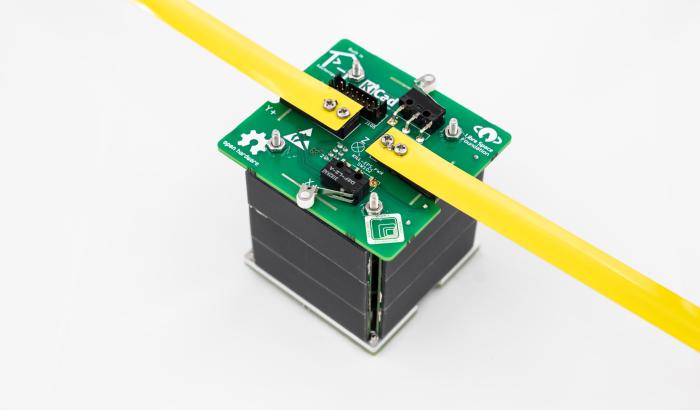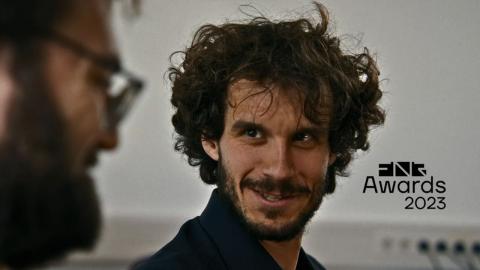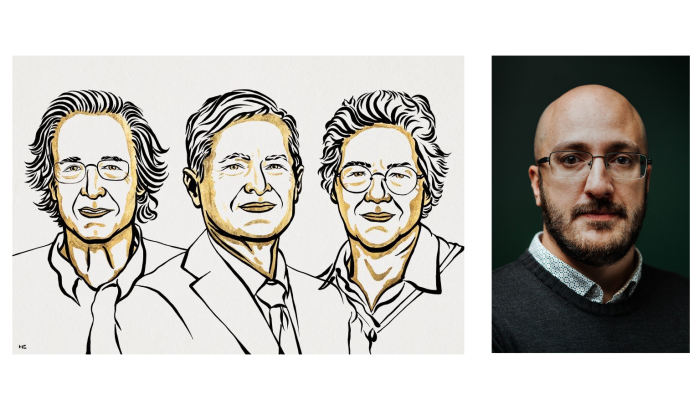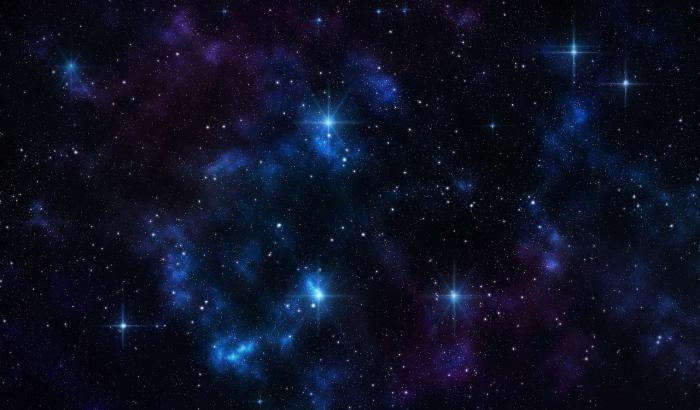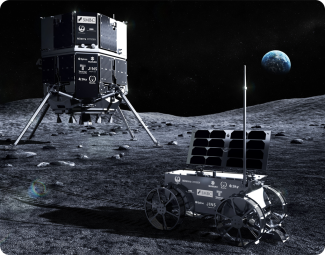
(c) ispace
Expanding our human living sphere, mobilising the resources of the moon or asteroids and using them economically: What sounds like distant future scenarios, science and the space industry are already working on at full speed. The Luxembourg-based European branch of the lunar exploration company ispace plans to use a Space X Falcon 9 rocket to launch a lunar lander and a rover to the moon on January 15. The lightweight rover was developed and built in Luxembourg and will also be used for research. We spoke to Dr Philippe Ludivig, Senior Space Robotics Engineer, and Charlotte Nassey, Senior Government Affairs and Policy Officer at ispace Europe, before the launch.
The journey of the ispace lunar lander and the micro-rover to the moon will take four to five months. Why so long?
Philippe Ludivig: Our new mission to the lunar surface could fly directly to the moon within three or four days, but that would cost a lot more fuel. Instead, as with our first mission in 2022, the lunar lander – so the spacecraft that lands on the surface of the moon – will make use of a low-energy transfer to reach a lunar orbit. So the long travel time has economic reasons. Ispace is a private company with limited budget and the launch costs are the highest costs for such a mission. Also, the devices we will send to the moon are very small and light; the weight of the rover is about 5 kg. The lander and the rover will travel as a secondary payload together with another satellite carrier loaded onto the Falcon 9 rocket. This also allows us to limit the costs.
How much research goes into such a mission?
Charlotte Nassey: Scientists and engineers who will operate the rover once landed on the moon were also involved in building it. This is quite unique. Also, the operation itself is very novel. There have only been a few successful landings of planetary rovers before. In the case of Europe, this will be the first European rover to drive on the lunar surface. In contrast to satellite operations, for example, there is still no perfect way of how to drive a rover on the lunar surface, and all missions had a different technical approach. So we are still pushing the boundaries of research here and we spend a lot of effort on testing the most effective ways of driving in our research lab in Luxembourg. Whereas the lunar lander is operated from our office in Japan, once it has landed on the moon, our rover will be fully operated from Luxembourg. It will be the first time that someone in Luxembourg navigates a device on the moon!
Philippe Ludivig: The rover itself mainly relies on existing engineering and is not a research device. However, for future missions, we are looking to collaborate with the Luxembourg Institute of Science and Technology (LIST) and with ESRIC, the European Space Resources Innovation Centre launched in Luxembourg in 2020. ESRIC performs research relevant for us – for example, they are looking for novel excavation, beneficiation and extraction methods for lunar Regolith, and we are looking for their input and latest publications when we design our operations. There were other successful landings from the US, Russia, China and India on the lunar surface surface as well. We also recently used the LunaLab, a laboratory at SnT at the University of Luxembourg that I helped to build myself as a PhD candidate a few years ago. This lab simulates Lunar conditions to test robotic applications. Although ispace has its own indoor lunar facility in Luxembourg, this lab is an additional data point for testing devices. We are also looking forward to the opening of the Dusty Thermal Vacuum Chamber at ESRIC/LIST, a facility which will allow tests under lunar surface conditions. Having these facilities next door is just amazing!
Philippe, you did your doctorate as part of a cooperation between the University of Luxembourg’s SnT and ispace, with the help of the AFR PPP program of the FNR. What is your expertise and your part in the ispace mission?
Philippe Ludivig: My PhD at the University of Luxembourg’s centre SnT focused on autonomous driving and localization, determining the position of lunar rovers. As a space robotics engineer at ispace, I am responsible for the camera systems on the rover, both hardware and software, and I developed the tools the operators will use to drive the rover. I also trained the operators to use these tools and organised the test campaigns with the rover in different testing locations.
Now that the hardware is built, I focus on the operations side: How do we operate the rover, once it successfully landed on the moon? We will send drive commands from Earth, based on data we get from the rover. As light takes 1.25 seconds to travel from the moon to Earth, we must always take this time delay into account and drive a little bit slower.
Here in Luxembourg, we will be three teams for the three working shifts around the clock as well as a back-up team. Each team is composed of a Pilot who commands the rover, a Navigator who supports the Pilot and verifies his commanding, a Ground controller who makes sure the ground systems and communication is working, and a Flight Director who supervises the whole team and communicates with the lander team. I am the Navigator in this setup.
What is the most delicate moment of the mission?
Philippe Ludivig: The landing is the most difficult part, because it must happen fully autonomously. There have only been a few successful landings on planetary bodies before. We can test many scenarios on Earth, but we cannot anticipate all of them. In the end, you must try it for real and send the devices to the moon. As a private company, learning by doing is part of our mentality. Testing approaches in practice can be even the more efficient way of development.
Where does the rover get its energy from and how long can it “survive” on the moon?
Philippe Ludivig: Our lunar rover has solar panels and can operate for up to 14 earth days. A full lunar day corresponds to 28 earth days, so the rover will be able to operate for half a lunar day. Once the sun sets on the moon, temperatures will drop to minus 200 Celsius, which our rover won’t survive, unfortunately. The lander and the rover will then remain on the moon.
During the first ispace-mission to the moon in 2022, the landing failed. What makes you optimistic that this time the landing will work smoothly?
Philippe Ludivig: We know exactly what happened and addressed all the issues. Mission 1 was also a testing scenario, lessons learned went into Mission 2. Will it work out? I can’t tell you, but we have a much better chance for sure.
What exactly is the purpose of this second mission?
Philippe Ludivig: For ispace, it is mainly a technology demonstration. We want to demonstrate our capability to land on the moon and to provide commercial transportation to the lunar surface. The mission includes science as well, and we plan to conduct several experiments. One of these experiments concerns the lunar dust or lunar Regolith, a thick layer of fragmental and unconsolidated rock material which covers the entire lunar surface. Once landed, the rover will pick up some Regolith with a small shovel, but only for test purposes. The material will stay on the moon.
Why is moon dust of great interest to science?
Philippe Ludivig: We have data from previous Apollo missions and know how Regolith looks like, and samples have been brought to Earth. But these are specific samples from specific places. The composition of the Regolith varies depending on the location on the moon. Depending on the composition, researchers can make assumptions about how the moon formed. We want to characterise the Regolith in the specific landing site to get a better idea of the Regolith’s consistence. This is of great interest for science and for the space mining industry: If one day we will be able to extract resources from the lunar surface, we need to know its composition. We also know that there is water on the moon. If one day we can extract it, we could produce hydrogen and oxygen out of this water and could turn the moon into a gas station for further space exploration missions, or for refueling earth satellites in an earth orbit.
Which other scientific experiments are planned?
Philippe Ludivig: We will also examine very practical issues: How much dust will the lunar lander blow away, what dust cloud will develop, and what impact will this dust have? Will it stick on cameras and solar panels and decrease the performance of the equipment? For the mobility of the rover, it is also important to know how deep the Rover will sink into the dust. Currently we can only make assumptions on this based on previous lunar missions.
Thanks to the shovel, we can also measure the angle of repose at which the Regolith falls back on the lunar surface. The better the understanding of the Regolith of an intended landing site, the better we can design a new rover for that site. We also want to take as many pictures as possible of how the Regolith interacts with the rover wheels: how deep will the rover tracks be? From this we can draw conclusions about the behavior of the dust and how we need to improve the design of the wheels in the future to make them more efficient. We will also measure the resistance of the wheels by locking three wheels and moving one. This will deliver additional data on the consistency of the material.
Who owns this moon dust or other resources from outer space - are these legal issues also the subject of research?
Charlotte Nassey: Absolutely. This mission benefits from the first ever authorisation under the Luxembourgish space resource law for an ownership transaction around Regolith. ispace was awarded a contract by NASA to demonstrate this legal framework. Once the rover has collected a small amount of Regolith, the ownership of this material will be transferred to NASA using the Luxembourgish law. NASA however does not intend to pick up the Regolith, it will stay on the lunar surface. The intention is to test the new field of law and keep developing the legal knowledge. We will also test the Japanese space law that also allows this kind of ownership transactions.
What fascinates you personally most about the mission?
Philippe Ludivig: Visiting the moon would be cool, but it will still take a long time for regular people to go there. The fascination of pushing the boundaries of engineering and research is the most exciting part for me. Space exploration has always been exciting, because it means going where no one has been before.
Infobox
The micro-rover was built at the European branch of ispace in Luxembourg. How did this come about?
Charlotte Nassey: Our company opened offices in Japan, in the United States and in Luxembourg because these countries enable the commercialisation of space resources, have set up the necessary legal frameworks and offer a lot of support. We were also attracted by the ecosystem built around Space exploration here in Luxembourg. There are research institutes and other companies developing technology important for our future missions to the moon. We needed to carve out an activity specifically for our office in Luxembourg and it made sense to build the rover in one place.
Philippe Ludivig: It is hard to recruit experts in our domain, and I am happy to see that a lot of experts with a scientific background are being trained at the University of Luxembourg or are already working in research institutes such as LIST, the Luxembourg Institute for Science and Technology, and SnT at the University.
- Further information on the spaceresources.lu initiative can be found here.
- An overview on space research in Luxembourg is available on the Research Luxembourg portal.

